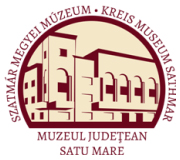Szőcs Péter Levente (szerk.): Arhitectura ecleziastică din Satu Mare (Satu Mare, 2008)
Introducere
Foreword How dreadful is this place! This is none other but the house of God, and this is the gate of heaven. Gen, 28, 17 A catalogue on the ecclesiastical architecture of Satu Mare was published in the jubilee year 2000. It aroused a great interest and was soon out of print. This interest revealed the major importance of an illustrated volume regarding the churches of the county, being provided to the public in an easily accessible way, at the same time observing the highest professional standards. The European Union supporting the cross-border cooperation through Phare program has offered us the opportunity to edit this catalogue. It is a real challenge to bring forward in one volume the ecclesiastical architectural legacy of the entire county. Satu Mare integrates regions with various traditions, being the home of different ethnic and religous communities. Nevertheless, the three authors proposed to reflect the cultural diversity, the individuality and mutual influences among cultures, because this complexity is the main feature of Satu Mare County. Therefore, this catalogue presents photographs of 82 churches, accompanied by explanations in three languages: Romanian, Hungarian and English. The present selection is based on the previous catalogue, having made the necessary improvements and extensions. The authors of the texts on monuments can be identified by the initials of their names (DB: Daniela Bălu, SzP: Szőcs Péter Levente, TSz: Terdik Szilvester). If, at the best case, studies weres published on the church, it will be indicated at the bottom of the presentation. General studies and works on the local history were comprised in a list of references at the end of the volume. The references indicate the source of information for the texts in the catalogue and offer a starting point for further investigations. The usage of a technical terminology was needed in order to preserve the exact formulation and precise description of the monuments. Definitions of these terms are given in a Romanian and Hungarian glossary, at the end of the volume. The presentations on the monuments are arranged in alphabetical order of the settlements’ official name. An index of localities with the names used in different languages was included at the end of the volume. While preparing the volume, we were revisiting all the churches presented here and we returned with mixed impressions. It was sad to see old buildings “repaired” by the community so that they lost almost all the values of an architectural monument. On the other hand, there were fortunate cases, where the situation of the building was improved as compared to the anterior stage (year 1999 and 2000), due to successful renovations carried out in the meantime. It is very important to maintain these edifices function but the actions of well-intended renovations should take into consideration the historical and architectural values of the churches. The present volume wishes to promote the historical values and, therefore, to protect them. The editor 7
